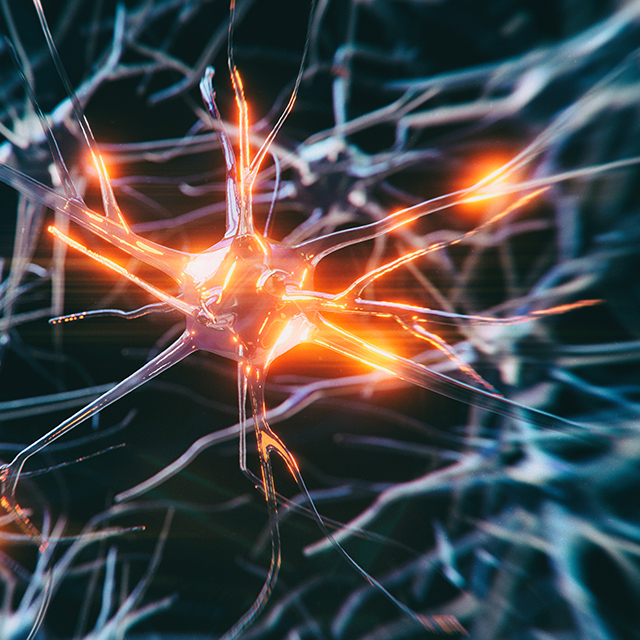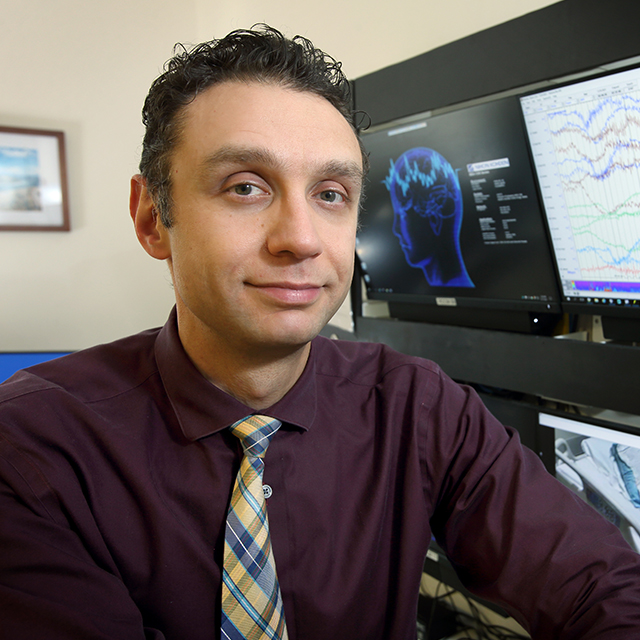According to the World Health Organization, an estimated 50 million people worldwide have epilepsy, making it one of the most common neurological diseases. Anti-seizure medications are the first-line treatment for these patients, but 30% to 40% do not respond to cocktails of these strong drugs.
Surgeries that remove the seizure onset zone (SOZ) can offer a permanent fix, but these procedures have their own drawbacks, explains Johns Hopkins epileptologist Joon-Yi Kang, who specializes in treating drug-resistant epilepsy. About 40% to 60% of patients who have these procedures do not achieve sustained seizure freedom. Additionally, significant problems are associated with locating the SOZ. Currently, patients stay days or weeks in a hospital epilepsy monitoring unit, wearing intracranial mapping electrodes and passively waiting for a seizure to occur. Sometimes seizures never happen during the patient’s stay, which may result in suboptimal surgical outcomes.
“Epilepsy surgery can be incredibly helpful for many patients, but there’s definitely room for improvement,” says Kang.
As published in Brain, Kang and her colleagues recently made a significant step forward in improving efficiency and more completely outlining the SOZ. By stimulating patients’ brains with a series of single electrical pulses delivered at specific frequencies, the researchers identified areas that responded with a “resonant” frequency of their own. Stimulating these excitable areas at even higher frequencies reliably triggered seizures — a phenomenon that could eventually be harnessed to significantly shorten the wait time in epilepsy monitoring units and more reliably identify the seizure foci to improve surgical success.
For this study, Kang and her colleagues, including postdoctoral fellow Rachel Smith and Sridevi Sarma, a biomedical engineer and the associate director of The Johns Hopkins University’s Institute for Computational Medicine, worked with 32 patients who stayed at Johns Hopkins’ epilepsy monitoring unit and subsequently had surgery to treat their drug-resistant epilepsy between January 2016 and June 2021. While these patients waited for a natural seizure to occur, the researchers delivered single-pulse electrical stimulation (SPES) to regions of the brain identified as near the seizure foci through imaging data and scalp EEG recordings. Analysis using transfer functional modeling, performed by Sarma, revealed brain areas that responded to these millisecond pulses with relatively large electrical outputs.
These outputs rarely triggered seizures. But Kang and her colleagues found that when the researchers stimulated the resonant areas with higher frequency pulses, they could reliably trigger seizures or epileptic auras in all six patients on whom they tested this approach. Additionally, when they searched for resonant tissue after surgery, patients who retained more of this tissue were less likely to be seizure free, suggesting neural resonance is a key biomarker for the SOZ.
“Being able to accurately resect the SOZ can give epilepsy patients back their independence and quality of life, allowing them to drive, return to work and spend time with their family without worrying when a seizure will strike,” Kang says. “Our findings bring us closer to achieving this goal for every patient who undergoes epilepsy surgery.”


